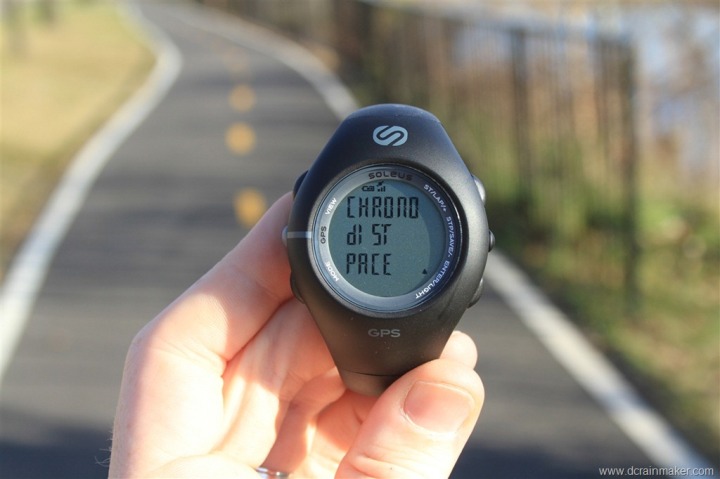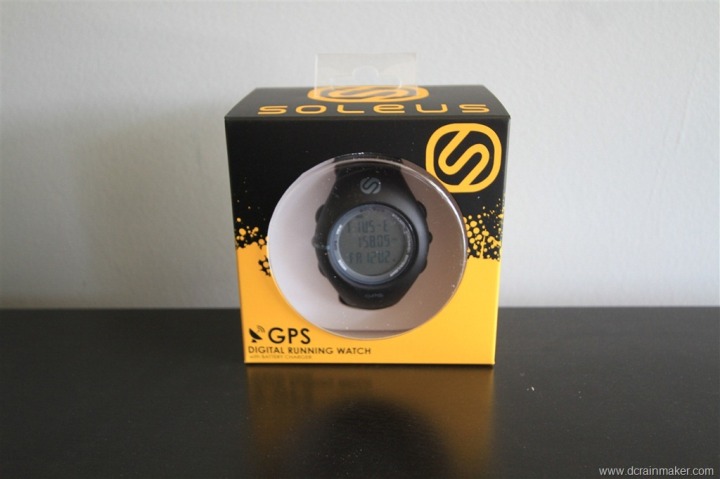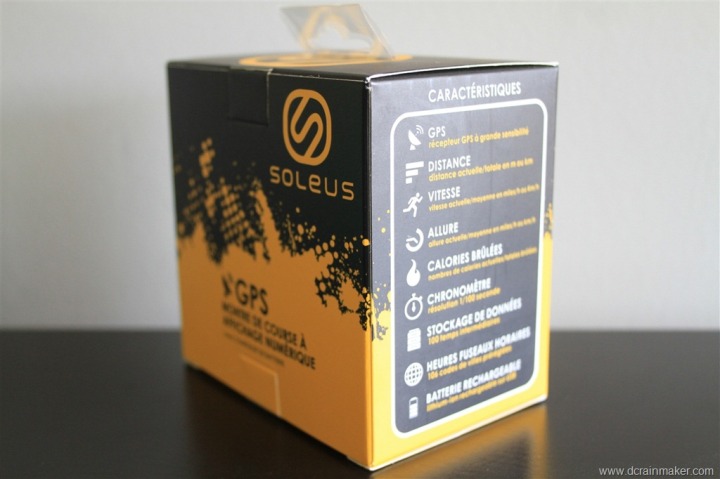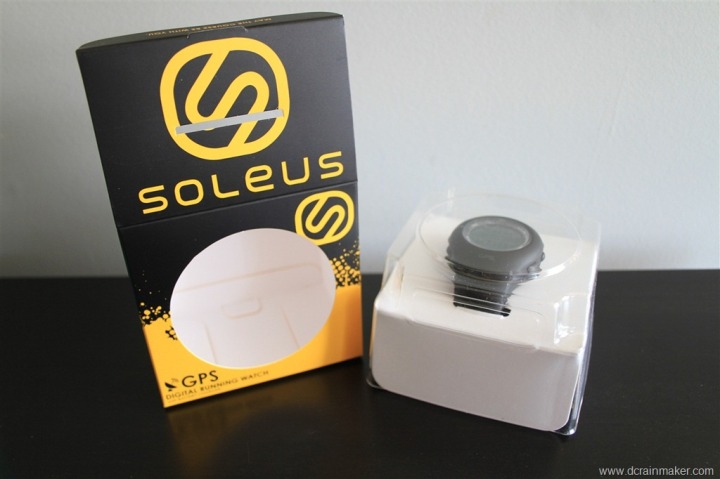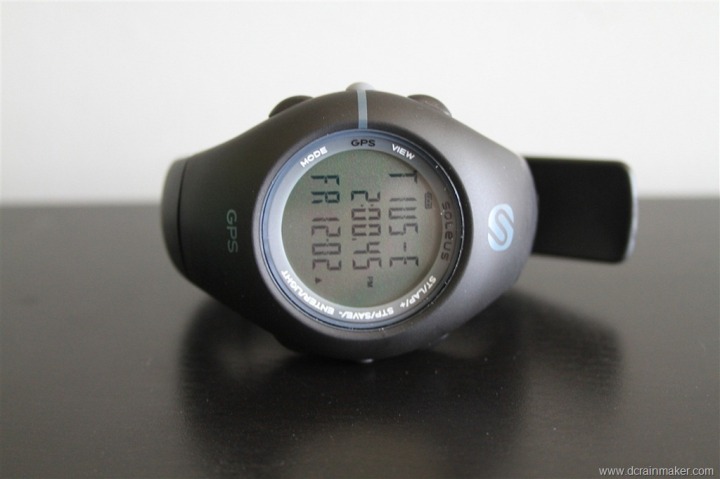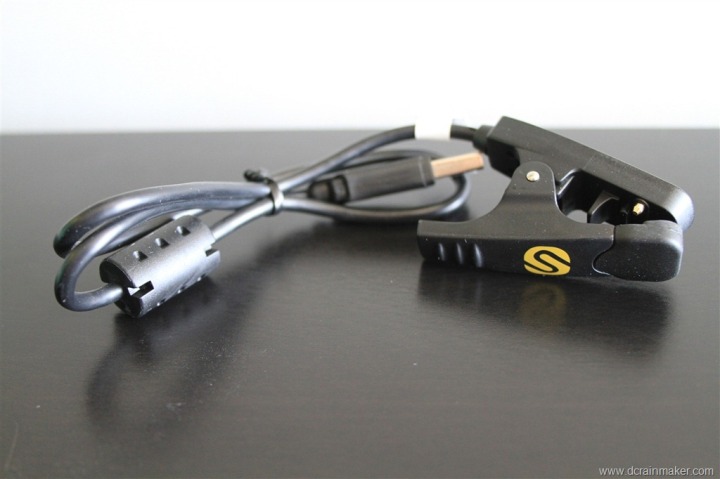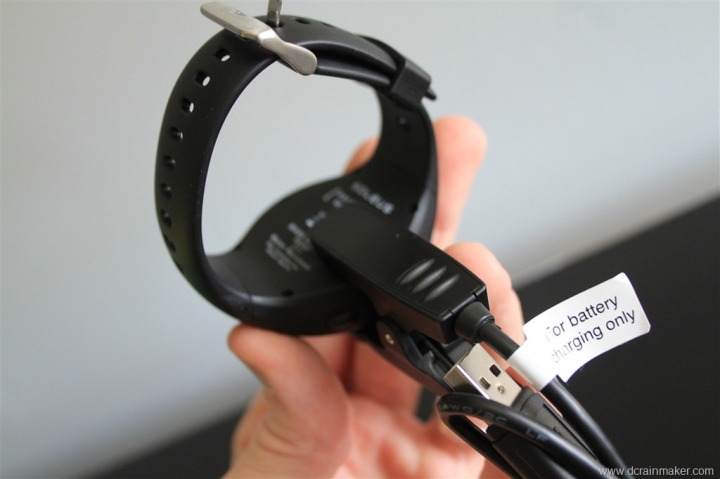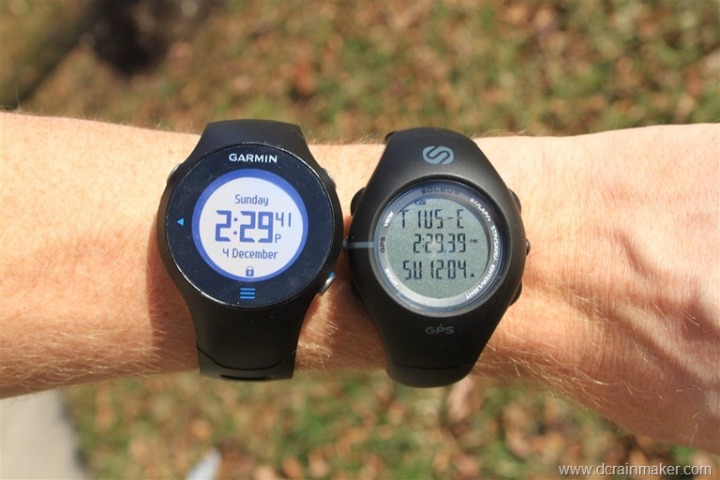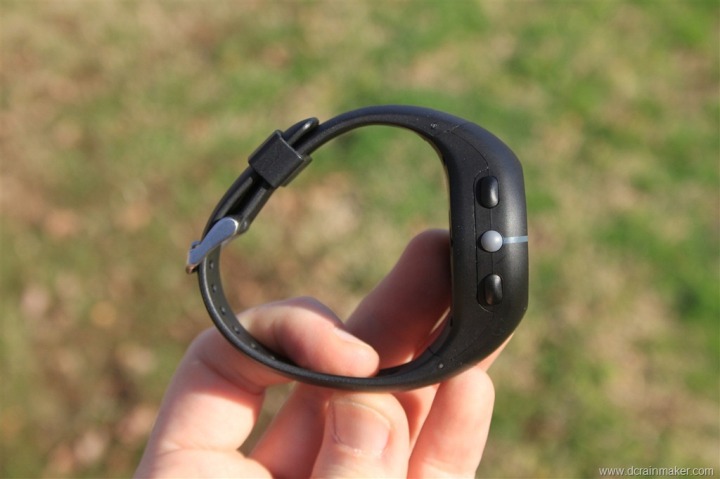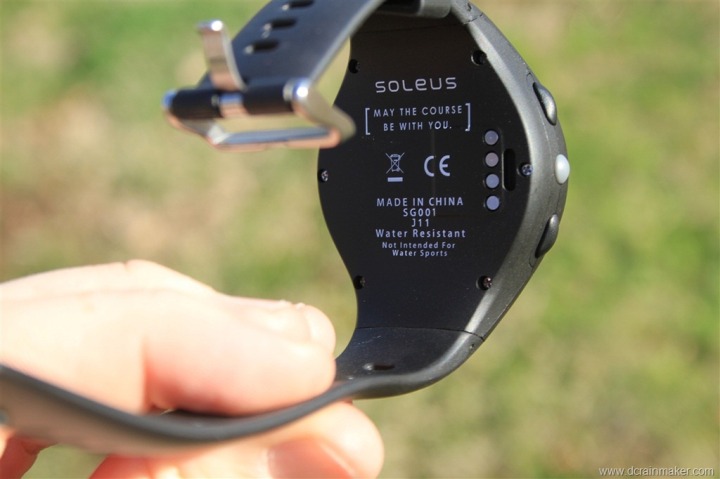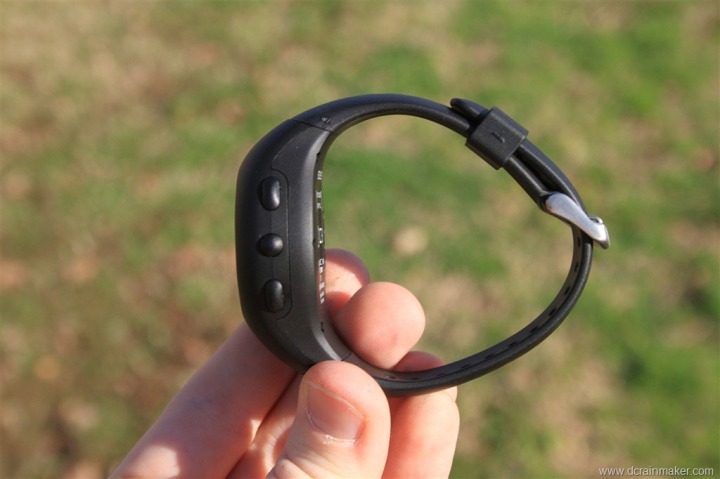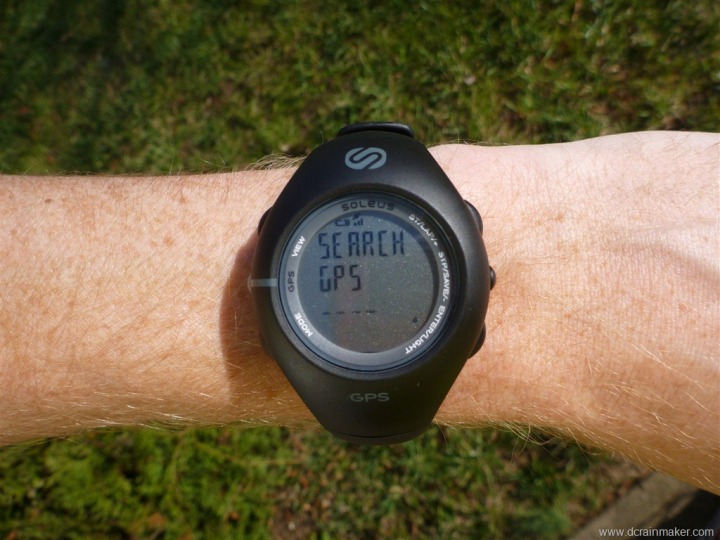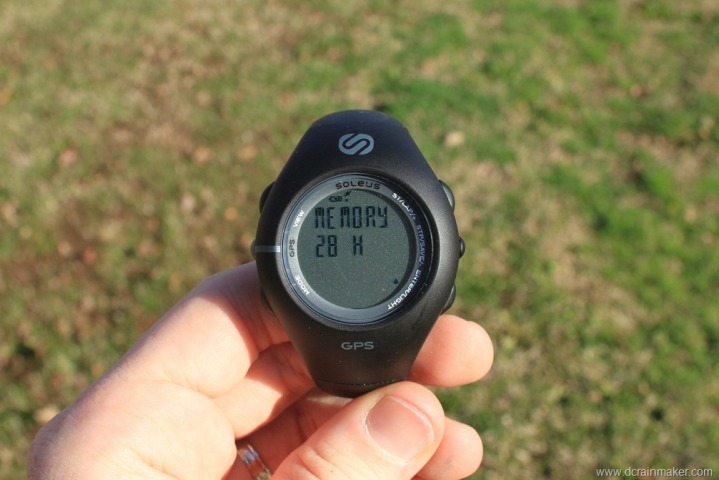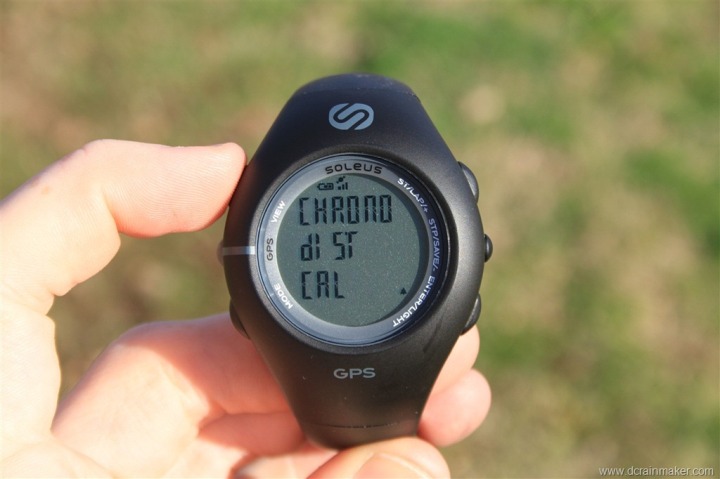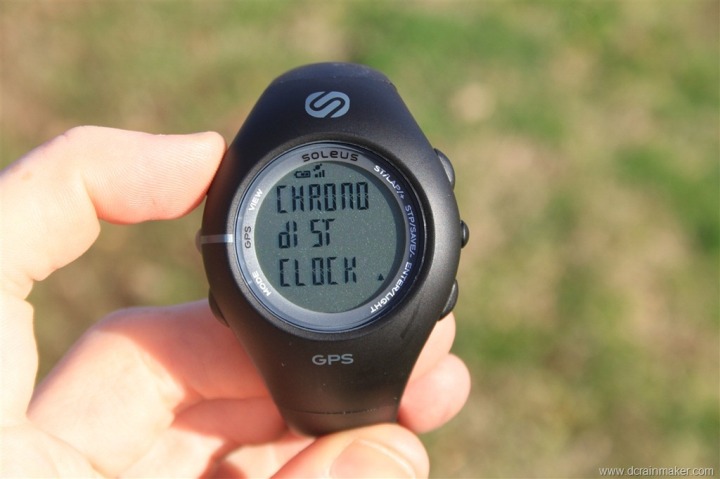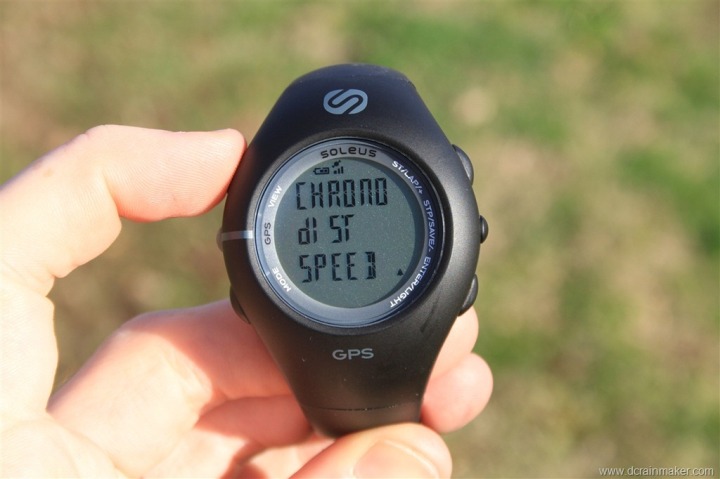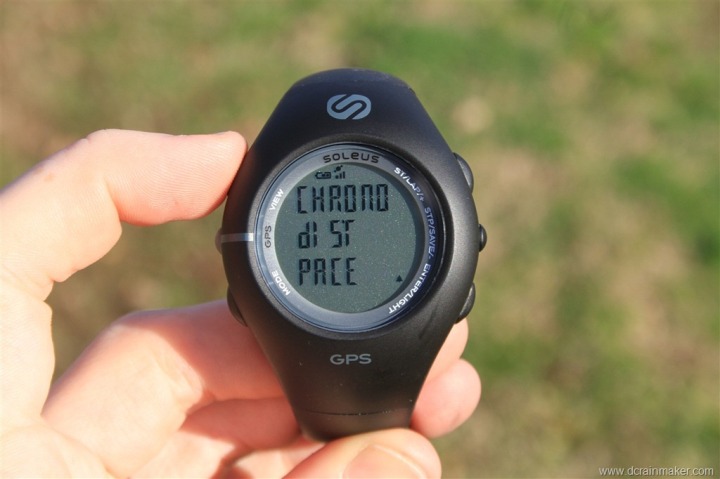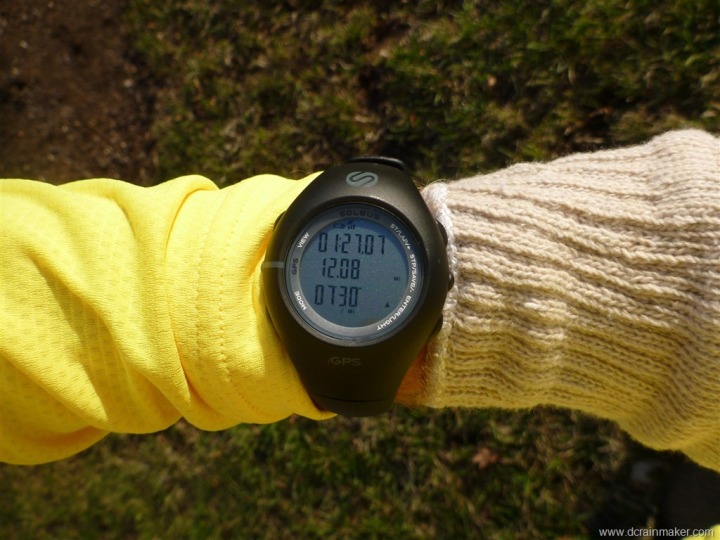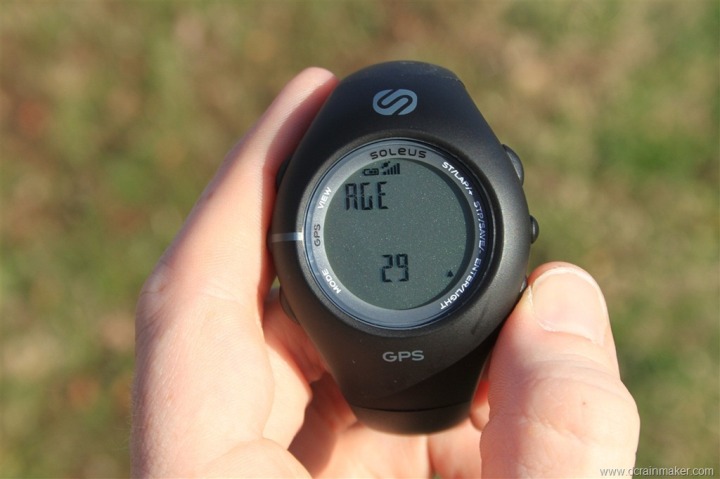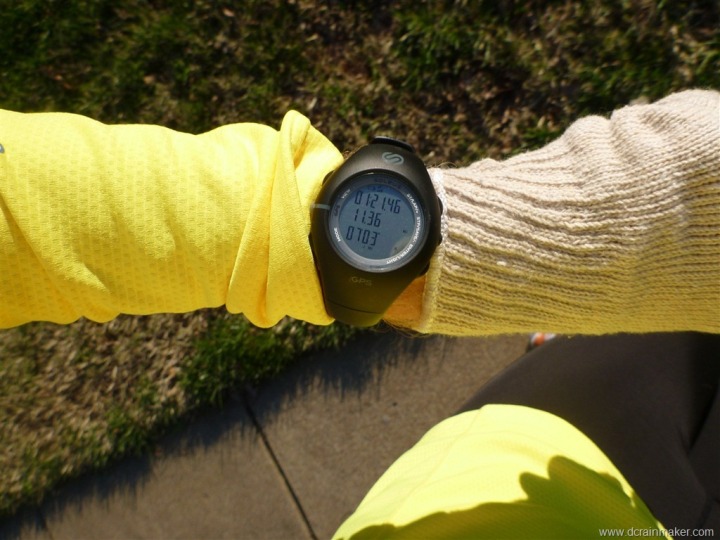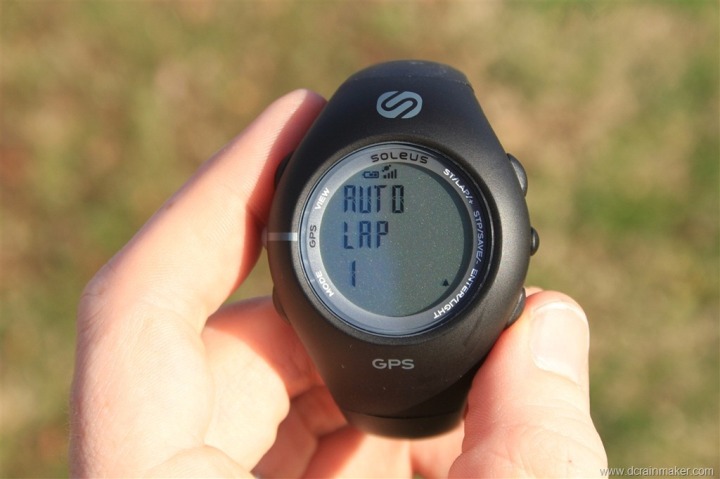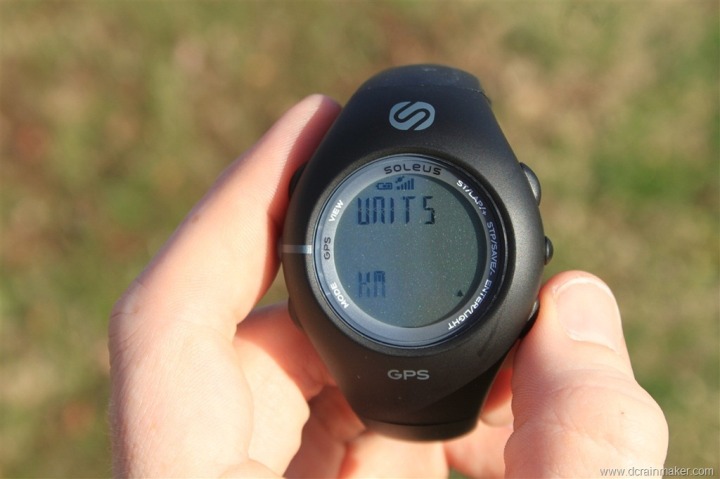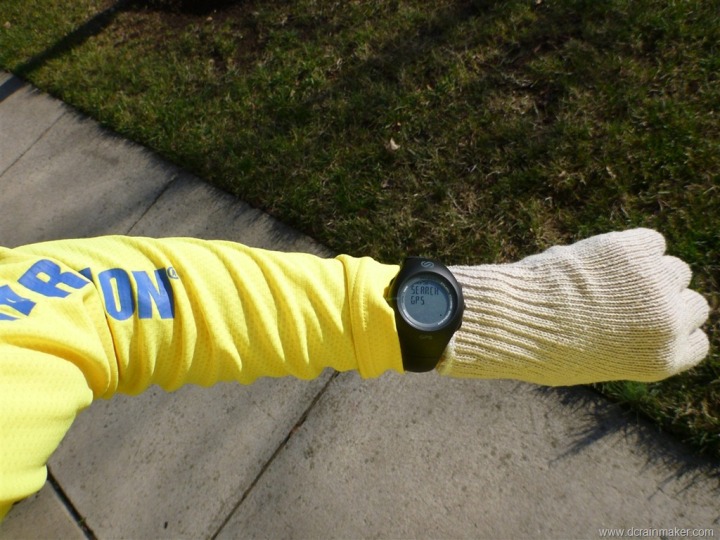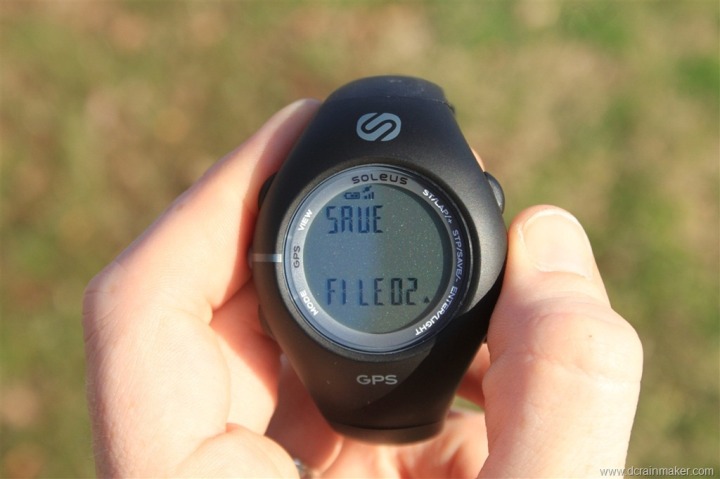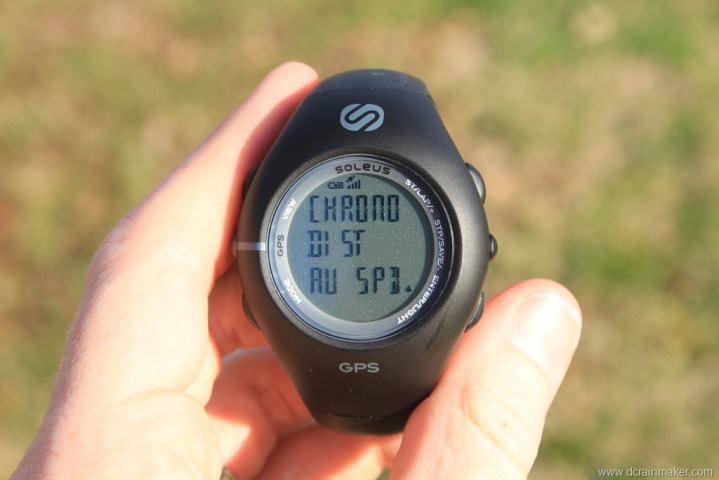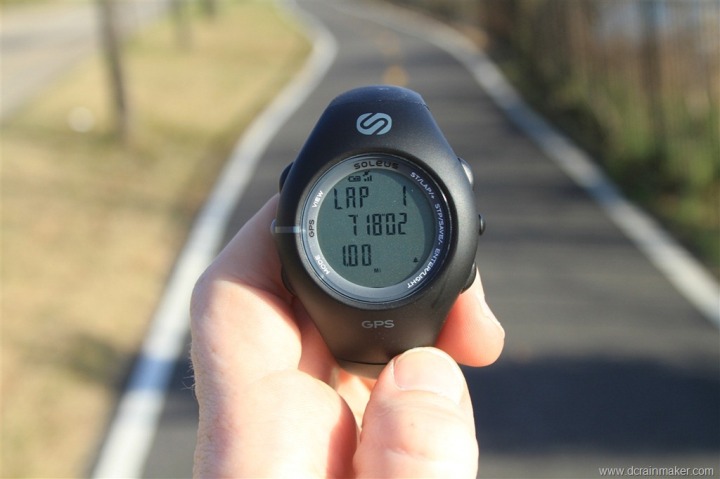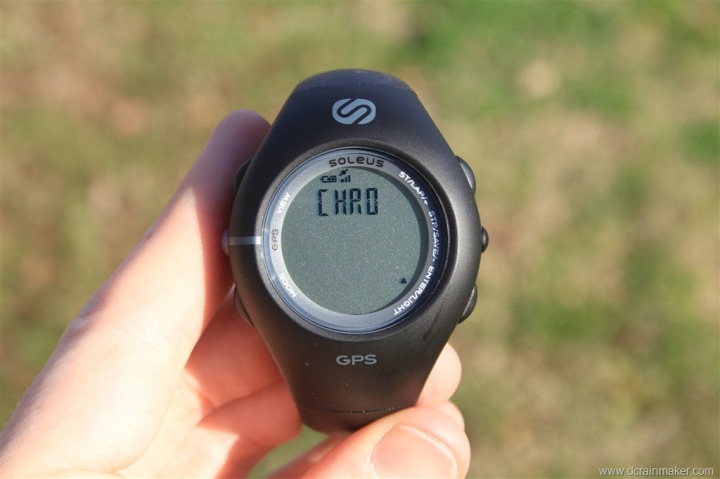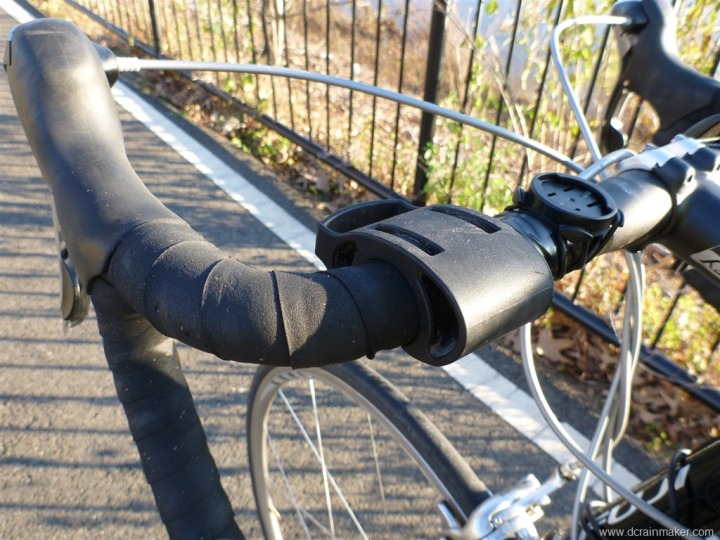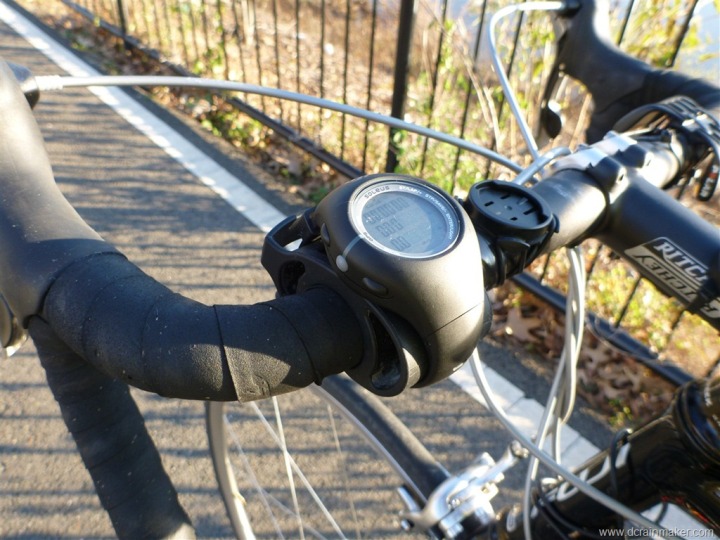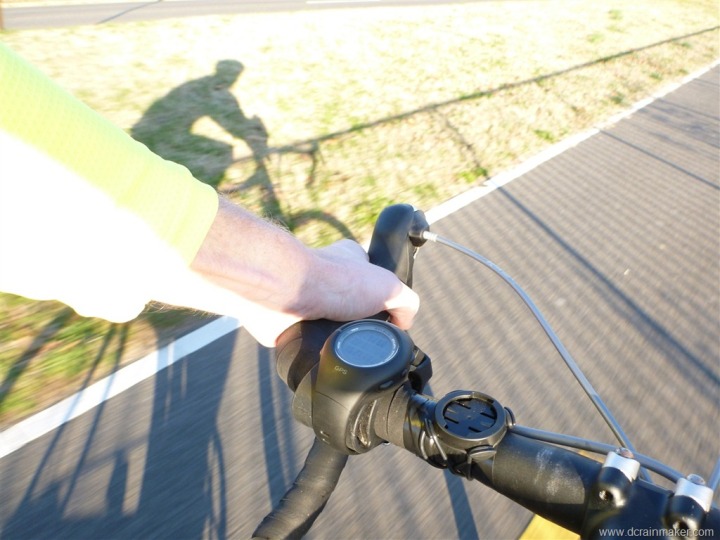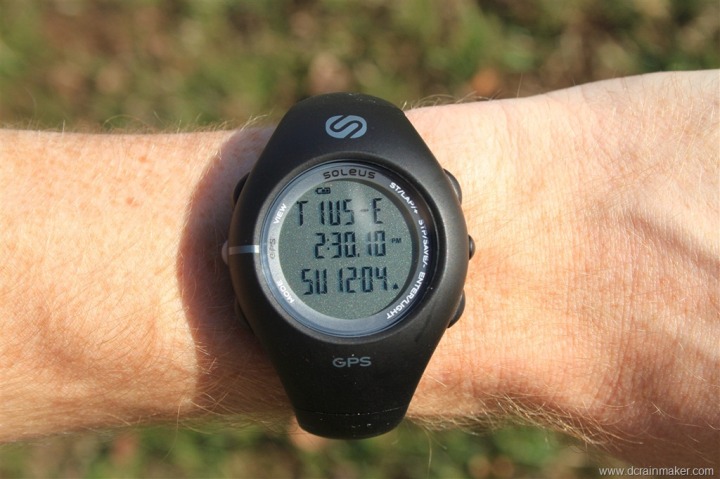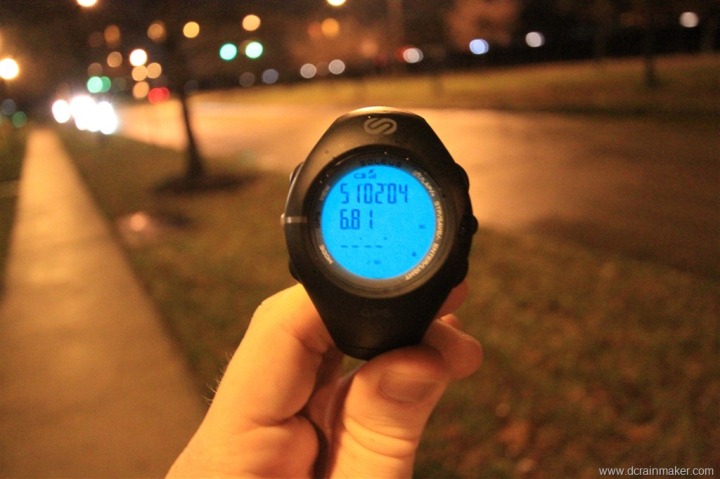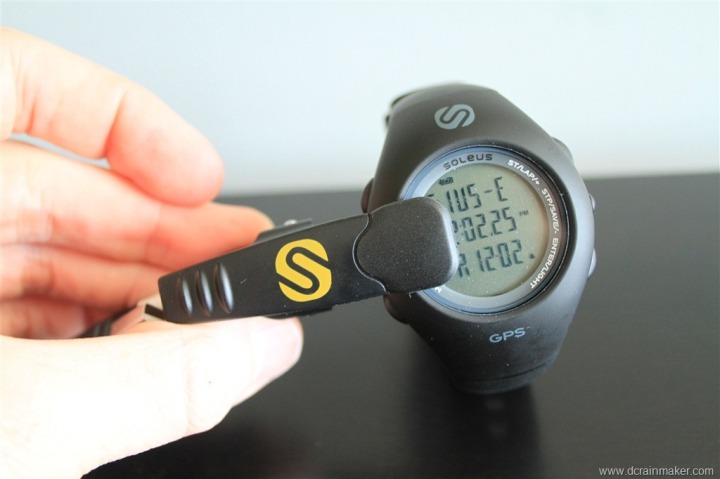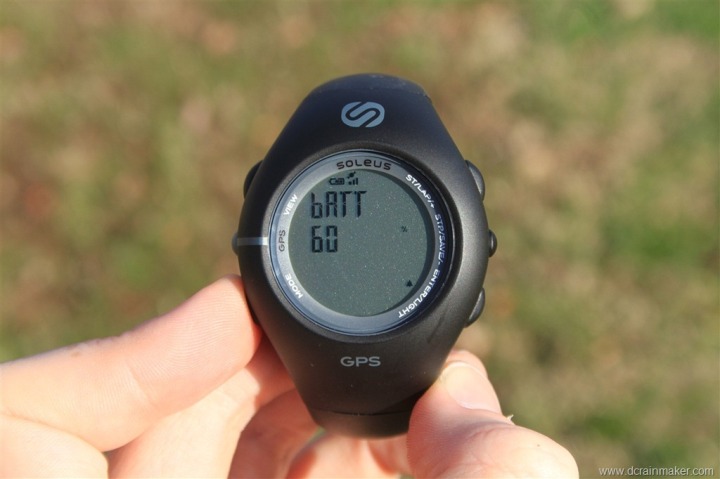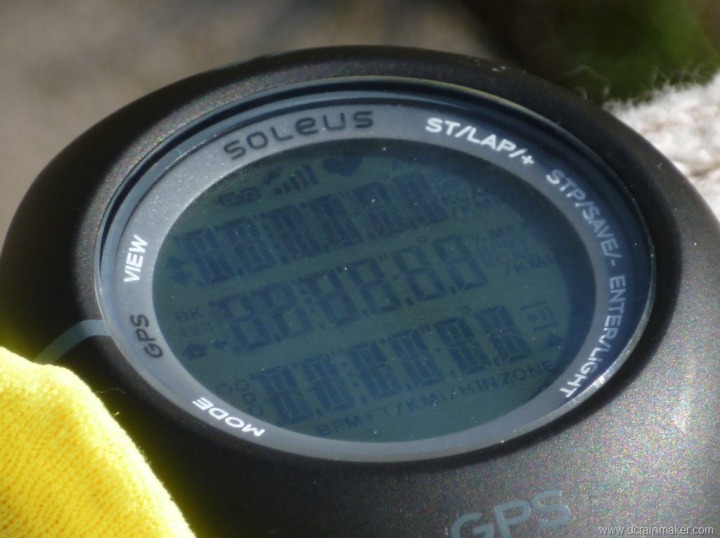I had heard about the Soleus GPS 1.0 watch a few times over the course of the fall, but with how busy things have been, I just didn’t have the chance to hit up the folks from Soleus and give it a shot. But back around Thanksgiving we got in contact and they sent me out a unit to try out.
I actually hadn’t planned to put together a review until after Christmas, but two things changed my mind. First, the unit has exceeded my expectations. I honestly didn’t expect much from the unit, and expected that it might be poorly executed on. But in reality, its simplicity is astonishingly easy to use, and even more importantly – its accuracy is dead on. Secondly, because the unit is simple and includes less features (hence why its $90…ok, officially it’s $99, but street is about $90), there’s less to write about. As such, while this is an in-depth review, there’s just less compared to a $400 run watch. And yet, that’s totally cool. How cool? Well, you’ve gotta read on to find out.
So, with that introduction, let me put up the usual notes about my review:
Like all my reviews, they tend to be pretty in depth (perhaps overly so) – but that’s just my trademark DC Rainmaker way of doing things. Think of them more like reference guides than quick and easy summaries. I try and cover every conceivable thing you might do with the device and then poke at it a bit more. My goal is to leave no stone unturned – both the good and the bad.
Lastly, at the end of the day keep in mind I’m just like any other regular triathlete out there. I write these reviews because I’m inherently a curious person with a technology background (my day job), and thus I try and be as complete as I can. But, if I’ve missed something or if you spot something that doesn’t quite jive – just let me know and I’ll be happy to get it all sorted out. Also, because the technology world constantly changes, I try and go back and update these reviews as new features and functionality are added – or if bugs are fixed.
Unboxing:
The unit comes in a tidy little yellow and black box, complete with the ability to see if the watch in question still has a battery charge (not that it matters, because you’ll just charge it back up anyway):
Once you open the outer shell, inside you’ll find the watch hanging out on its little plastic perch:
After removing it, you’re down to the bare essentials:
Inside you’ll find basically three things, two of which are important. First up, is the watch itself:
Then we’ve got the USB charging cable and clip. This plugs into any USB port you find around your house. If you lack USB ports around the house…well…we’ve probably got other issues. The charging clip does not transfer data in any capacity to the unit – since as of this time the unit doesn’t support downloading of data (but we’ll talk about what’s coming down the line there in a bit).
Then we’ve got the manual itself. I haven’t really found a need for the manual as of yet, since really everything is so simple to use and self explanatory. But if I did need it, it’s there for me. With that, that’s all there is on the unboxing front – probably one of the quickest unboxings I’ve done!
To give you some context on size in comparison to another unit, I’ve strapped it on my wrist with the Garmin FR610:
And here’s some shots of different perspectives of the watch, I thought the saying on the back was pretty funny.
Running:
When you first turn on the unit to go running it’ll begin a search for satellites. Now this is the only portion of the unit that seems to lag a bit compared to its competitors. On average I found that it took about 1-2 minutes for the unit to find satellites in clear sky. This is in comparison to most Garmin/Timex units being well under 30 seconds with Hotfix technology. Had it been summer I probably wouldn’t have noticed as much, but given it’s winter and 30*F or colder, you tend to notice these things.
Thus, my recommend as always is to simply place the watch in a windowsill as you get your shoes on, it’ll go ahead and find the satellites and you’ll be on your way.
Once it has found satellites it’ll let you know the current battery level (in percentage) and then the current memory left. As of this moment after 2.5 weeks of running I have 20 hours left of running time, though at the time of this picture I had 28 hours left:
After that you can change through the five view modes. Each mode has the current distance at the top, then the current activity time, and then the bottom field is changeable. The bottom field can alternate between the following fields: Pace, Speed, Calories, Clock.
For running you’ll likely just keep it on pace – since that’s the common display format for running, such as 7:30/mile, like below:
For cycling, you’d likely use speed. And, if you’ve been enjoying too many Christmas Cookies (like me), then perhaps calories is your best bet. Calories just uses a simple running equation involving weight and distance. Obviously this isn’t quite as accurate as some of the heart rate based algorithms, but for most individuals this gets you within the ballpark. You’ll configure your weight, height, age and gender information via settings on the watch.
Once you’ve started the unit and begun running the unit will immediately update your distance and pace progress. I’ve found that the pace is smoothed a bit, which helps to remove any of the common GPS jumpiness that often results from instantaneous pace. Based on my observation, I’d guess that a 10-second smoothing filter is applied to it, which is a reasonable number for most pacing situations.
During runs I had set it to automatically create a lap marker every 1-mile. You can change the autolap parameter for between .5 miles and 5 miles (.5, 1, 2, 3, 4, 5, off). Additionally, you can configure it to automatically alert you each lap – which simply means that it’ll beep. When autolap is enabled it’ll go ahead and display the current lap time as you complete that lap.
Note that if you switch the watch mode to kilometers (instead of miles), then all said information is in relation to kilometers instead of miles. Thus metric instead of statue. And of course, you can create a lap marker anytime you’d like merely by pressing the lap button.
Note that since it’s colder out I’ve largely been using gloves – and I’ve had no problems using gloves with the buttons, not that I’d expect any issues.
Once you stop the watch at the end of your run, you can hold the center button to save the run to the units memory.
This allows you to later on pull up information within the run data (history) menu. This menu allows you to drill into specifics about the run such as start/stop time, total run distance, pace, speed and time, as well as average speed information.
You can retrieve the same information for each of the laps that you specified as well.
Finally, in addition to the GPS based running mode, the unit also contains a simple chrono mode, which you can use for basic timing as needed without the GPS enabled.
Cycling:
While the unit isn’t designed for cycling, it does work just fine for that purpose. Now, because it’s in a watch form factor, it’s not quite as visible as most handle-bar mountable bike computers. But, you can easily combine it with either the cheap Garmin or Polar mounts (usually about $10) and be on your way.
In my case, I had the Garmin rubber wrist watch mount handy, so I just wrapped it around that.
When you switch modes (running to cycling), you’re merely changing the display field options to be speed (MPH/KPH) instead of pace. Thus, you can pretty much do so at any time. Officially there’s no cycling mode or running mode, it’s just changing the view.
I had no problems reading the numbers from my seat, with it mounted on my handlebars. But if small and skinny numbers are tough to read for you, I’d imagine that this would probably be fairly difficult to read from a distance. Of course, this isn’t designed nor advertised as a cycling watch, so I can’t exactly fault them for that.
As a timepiece (regular watch):
The unit is easily small enough to function like a regular watch, and given its battery life, using it as a day to day watch is completely within reason.
The unit supports multiple saved time zones, and you can easily swap back and forth with a single button press on the view button while in watch mode. At the top of the unit it’ll display which time zone it’s in – such as ‘T1 US-E’ – indicating ‘Time zone 1 US Eastern’, or in the case of London – ‘T2 LON’. It doesn’t have a lot of space to work with, but it’s pretty easy to understand what its trying to tell you.
In addition, the unit also supports the creation of five alarms. Each alarm can be configured for one of the two time zones that you’ve set.
While the alarm beeping sound is loud enough that I can hear it anywhere within the room, though I don’t believe it would wake me from a deep sleep.
Backlight:
The unit includes a indiglo-style backlight that easily illuminates the display at night. The backlight illumination time is not configurable, but does stay on for 12 seconds upon press of the backlight button (lower right button).
The contrast level is high enough that you can easily make out the numbers on night runs, I had no problem and about 75% of my runs with the unit have been at night. You can also adjust the contract level within the watch, based on your preferences.
Charging and Battery Life:
The unit features a USB charging cable, as shown below. The charging cable clips onto the watch using waterproof connectors on the back of the watch, very similar to most watches in the market today. Note that you shouldn’t attempt to charge outdoors in the water however, I’m merely noting that the connector pads on the watch itself are waterproof. So no showers with the laptop, got it?
As far as battery life goes in my testing, I’ve been really impressed in that my 2.5 weeks since having the watch, I have yet to charge the unit.
In fact, I never even bothered charging it after it arrived and I unboxed it. It just continues to chug along, right now at about 20% battery left as I write this. I’m running four times a week with run length being between 40 and 90 minutes. The rest of the time it just sits there and displays the time, date and day of week.
Software/Downloading:
As noted earlier, at this time the Soleus GPS 1.0 unit does not have any mechanism to download workouts from the watch to your computer (nor upload routes). After all, that’s in part what allows the device to be as inexpensive as it is.
However, I did ask if this was something that could be possible down the road – and they noted that they are working on an accessory that would enable this scenario. The current timeline is ‘Early 2012’, so it’s not yet there today, but I think this could really open up the market and immediately reduce prices of many of the common competitors (Garmin, Timex, Suunto, etc…). The price gap currently is about $90 (Soleus) to $180ish (Garmin FR110/FR210/Timex Run Trainer) – a lot of difference there for the only substantial feature on the Garmin side being downloading and heart rate monitor (and footpod for the 210/TRT). On the Timex side, you’ve got quite a few more features though beyond that on the Run Trainer.
If they can price the accessory at a reasonable price (i.e. $20-$30) – and if the data recording rate is sufficient, they could enable some pretty interesting scenarios. We’ll have to wait and see here.
Also on the radar is a new model coming in February (the 3.0 unit) that will include both GPS and HRM capabilities. You can see that they are likely using the same display for both units, since the Heart icon is visible on the upper right portion of the screen. I also noted that there are some marking such as ‘in zone’ along the bottom – thus I suspect there’s plenty more in store here…
Comparison Chart:
The Soleus GPS 1.0 doesn’t really stack up in price to anyone, since it’s nearest competitor is twice its cost. That said, it most closely stacks up in features against the Garmin FR110 and Garmin FR210, as well as the Timex Run Trainer. Additionally, from a price standpoint you could consider the Garmin FR305 – though that is no longer being made (but still quite widely available). And because I already had the info in the table, I left the Nike+ GPS and Motoactv watch on there as well. It’s like one big party now! (Click to zoom).
| Function/Feature | Soleus 1.0 GPS | Polar Ignite 3 | Garmin Forerunner 55 | Polar Ignite 2 | Polar Unite | |||||||||||||||||||||||||||
|---|---|---|---|---|---|---|---|---|---|---|---|---|---|---|---|---|---|---|---|---|---|---|---|---|---|---|---|---|---|---|---|---|
| Copyright DC Rainmaker - Updated March 24th, 2024 @ 12:36 pm New Window | ||||||||||||||||||||||||||||||||
| Price | $90.00 | $329 | $199 | $229 | $149 | |||||||||||||||||||||||||||
| Product Announcement Date | Nov 8th, 2022 | June 2nd, 2021 | Mar 24th, 2021 | June 30th, 2020 | ||||||||||||||||||||||||||||
| Actual Availability/Shipping Date | Nov 8th, 2022 | June 2nd, 2021 | Mar 2021 | July 2020 | ||||||||||||||||||||||||||||
| GPS Recording Functionality | Yes | Yes | Yes | Yes | Only via Phone Connected GPS | |||||||||||||||||||||||||||
| Data Transfer | USB | USB, BLUETOOTH SMART | USB, Bluetooth Smart | USB, BLUETOOTH SMART | USB, BLUETOOTH SMART | |||||||||||||||||||||||||||
| Waterproofing | IPX7 | Yes - 30m | 50 meters | Yes - 30m | Yes - 30m | |||||||||||||||||||||||||||
| Dive/Snorkel Feature | No | |||||||||||||||||||||||||||||||
| Battery Life (GPS) | 20 hours | Up to 30 hours | 20 hours | Up to 20 hours | Up to 50hrs with phone GPS (4 days standby) | |||||||||||||||||||||||||||
| Solar Charging | No | |||||||||||||||||||||||||||||||
| Recording Interval | Preset | 1s | 1s/Smart | 1s | 1s | |||||||||||||||||||||||||||
| Dual-Frequency GNSS | Yes | |||||||||||||||||||||||||||||||
| Alerts | Sound/Visual | Vibrate/Visual | Sound/Visual/Vibrate | Vibrate/Visual | Vibrate/Visual | |||||||||||||||||||||||||||
| Display Type | AMOLED | |||||||||||||||||||||||||||||||
| Backlight Greatness | OK | Great | Great | Great | Great | |||||||||||||||||||||||||||
| Ability to download custom apps to unit/device | No | No | Yes (all Connect IQ Apps) | No | No | |||||||||||||||||||||||||||
| Acts as daily activity monitor (steps, etc...) | No | Yes | Yes | Yes | Yes | Voice Integration | Soleus 1.0 GPS | Polar Ignite 3 | Garmin Forerunner 55 | Polar Ignite 2 | Polar Unite | |||||||||||||||||||||
| Has Mic/Speaker | No | |||||||||||||||||||||||||||||||
| Can make/receive calls | No | |||||||||||||||||||||||||||||||
| Voice Assistant | No | Music | Soleus 1.0 GPS | Polar Ignite 3 | Garmin Forerunner 55 | Polar Ignite 2 | Polar Unite | |||||||||||||||||||||||||
| Can control phone music | Yes | Yes | Yes | No | ||||||||||||||||||||||||||||
| Has music storage and playback | No | No | No | No | ||||||||||||||||||||||||||||
| Streaming Services | No | No | No | No | Payments | Soleus 1.0 GPS | Polar Ignite 3 | Garmin Forerunner 55 | Polar Ignite 2 | Polar Unite | ||||||||||||||||||||||
| Contactless-NFC Payments | No | No | No | No | Connectivity | Soleus 1.0 GPS | Polar Ignite 3 | Garmin Forerunner 55 | Polar Ignite 2 | Polar Unite | ||||||||||||||||||||||
| Bluetooth Smart to Phone Uploading | No | Yes | Yes | Yes | Yes | |||||||||||||||||||||||||||
| Phone Notifications to unit (i.e. texts/calls/etc...) | No | Yes | Yes | Yes | Yes | |||||||||||||||||||||||||||
| Live Tracking (streaming location to website) | No | No | Yes | No | No | |||||||||||||||||||||||||||
| Group tracking | No | No | No | No | ||||||||||||||||||||||||||||
| Emergency/SOS Message Notification (from watch to contacts) | No | No | Yes (via phone) | No | No | |||||||||||||||||||||||||||
| Built-in cellular chip (no phone required) | No | No | No | No | No | Cycling | Soleus 1.0 GPS | Polar Ignite 3 | Garmin Forerunner 55 | Polar Ignite 2 | Polar Unite | |||||||||||||||||||||
| Designed for cycling | Barely | Yes | Yes | Yes | Yes | |||||||||||||||||||||||||||
| Power Meter Capable | No | No | No | No | No | |||||||||||||||||||||||||||
| Speed/Cadence Sensor Capable | No | No | Yes | No | No | |||||||||||||||||||||||||||
| Strava segments live on device | No | No | No | No | ||||||||||||||||||||||||||||
| Crash detection | No | Yes | No | No | Running | Soleus 1.0 GPS | Polar Ignite 3 | Garmin Forerunner 55 | Polar Ignite 2 | Polar Unite | ||||||||||||||||||||||
| Designed for running | No | Yes | Yes | Yes | Yes | |||||||||||||||||||||||||||
| Footpod Capable (For treadmills) | No | No | YES (ALSO HAS INTERNAL ACCELEROMETER) | No | No (but has accelerometer for indoor running) | |||||||||||||||||||||||||||
| Running Dynamics (vertical oscillation, ground contact time, etc...) | No | No | No | No | No | |||||||||||||||||||||||||||
| Running Power | No | No | No | No | ||||||||||||||||||||||||||||
| VO2Max Estimation | No | Yes | Yes | Yes | Yes | |||||||||||||||||||||||||||
| Race Predictor | No | No | Yes | No | No | |||||||||||||||||||||||||||
| Recovery Advisor | No | No | Yes | No | No | |||||||||||||||||||||||||||
| Run/Walk Mode | No | No | Yes | No | No | |||||||||||||||||||||||||||
| Track Recognition Mode | No | Yes | No | Swimming | Soleus 1.0 GPS | Polar Ignite 3 | Garmin Forerunner 55 | Polar Ignite 2 | Polar Unite | |||||||||||||||||||||||
| Designed for swimming | No | Yes | Yes | Yes | Sorta (waterproof but HR only tracking) | |||||||||||||||||||||||||||
| Openwater swimming mode | N/A | Yes | N/A | Yes | No | |||||||||||||||||||||||||||
| Lap/Indoor Distance Tracking | N/A | Yes | Yes | Yes | No | |||||||||||||||||||||||||||
| Record HR underwater | N/A | Yes | Yes | Yes | Yes | |||||||||||||||||||||||||||
| Openwater Metrics (Stroke/etc.) | N/A | Yes | N/A | Yes | No | |||||||||||||||||||||||||||
| Indoor Metrics (Stroke/etc.) | N/A | Yes | Yes | Yes | No | |||||||||||||||||||||||||||
| Indoor Drill Mode | N/A | No | No | No | ||||||||||||||||||||||||||||
| Indoor auto-pause feature | N/A | Yes | Yes | No | ||||||||||||||||||||||||||||
| Change pool size | N/A | Yes | Yes | Yes | No | |||||||||||||||||||||||||||
| Indoor Min/Max Pool Lengths | N/A | 20M/Y to 250 m/y | 20M/Y to 250 m/y | N/A | ||||||||||||||||||||||||||||
| Ability to customize data fields | N/A | Yes | Yes | Yes | Yes | |||||||||||||||||||||||||||
| Captures per length data - indoors | N/A | Yes | Yes | Yes | No | Triathlon | Soleus 1.0 GPS | Polar Ignite 3 | Garmin Forerunner 55 | Polar Ignite 2 | Polar Unite | |||||||||||||||||||||
| Designed for triathlon | No | No | No | No | No | |||||||||||||||||||||||||||
| Multisport mode | N/A | No | No | No | No | Workouts | Soleus 1.0 GPS | Polar Ignite 3 | Garmin Forerunner 55 | Polar Ignite 2 | Polar Unite | |||||||||||||||||||||
| Create/Follow custom workouts | No | Yes | Yes | Yes | Yes | |||||||||||||||||||||||||||
| On-unit interval Feature | No | Sorta (offers structured workouts) | Yes | Sorta (offers structured workouts) | Sorta (offers structured workouts) | |||||||||||||||||||||||||||
| Training Calendar Functionality | No | Has daily suggested workouts | Yes | Has daily suggested workouts | Sorta (offers daily workouts) | Functions | Soleus 1.0 GPS | Polar Ignite 3 | Garmin Forerunner 55 | Polar Ignite 2 | Polar Unite | |||||||||||||||||||||
| Auto Start/Stop | No | No | Yes | |||||||||||||||||||||||||||||
| Virtual Partner Feature | No | No (but can give out of zone information) | Virtual Pacer | No (but can give out of zone information) | No (but can give out of zone information) | |||||||||||||||||||||||||||
| Virtual Racer Feature | No | Yes (Race Pace) | No | No | No | |||||||||||||||||||||||||||
| Records PR's - Personal Records (diff than history) | No | No | Yes | No | No | |||||||||||||||||||||||||||
| Tidal Tables (Tide Information) | No | No | No | No | No | |||||||||||||||||||||||||||
| Weather Display (live data) | No | Yes | Yes | Yes | No | Navigate | Soleus 1.0 GPS | Polar Ignite 3 | Garmin Forerunner 55 | Polar Ignite 2 | Polar Unite | |||||||||||||||||||||
| Follow GPS Track (Courses/Waypoints) | No | No | No | No | No | |||||||||||||||||||||||||||
| Markers/Waypoint Direction | No | No | No | No | No | |||||||||||||||||||||||||||
| Routable/Visual Maps (like car GPS) | No | No | No | No | No | |||||||||||||||||||||||||||
| Back to start | No | No | No | No | No | |||||||||||||||||||||||||||
| Impromptu Round Trip Route Creation | No | No | No | No | No | |||||||||||||||||||||||||||
| Download courses/routes from phone to unit | No | No | No | No | No | Sensors | Soleus 1.0 GPS | Polar Ignite 3 | Garmin Forerunner 55 | Polar Ignite 2 | Polar Unite | |||||||||||||||||||||
| Altimeter Type | None | GPS | No | GPS | None | |||||||||||||||||||||||||||
| Compass Type | None | N/A | None | N/A | N/A | |||||||||||||||||||||||||||
| Optical Heart Rate Sensor internally | Yes | Yes | Yes | Yes | ||||||||||||||||||||||||||||
| SpO2 (aka Pulse Oximetry) | No | No | No | No | ||||||||||||||||||||||||||||
| ECG Functionality | NO | No | NO | |||||||||||||||||||||||||||||
| Heart Rate Strap Compatible | No | Yes | Yes | Yes | Yes | |||||||||||||||||||||||||||
| ANT+ Heart Rate Strap Capable | No | No | Yes | No | No | |||||||||||||||||||||||||||
| ANT+ Speed/Cadence Capable | No | No | Yes | No | No | |||||||||||||||||||||||||||
| ANT+ Footpod Capable | No | No | Yes | No | No | |||||||||||||||||||||||||||
| ANT+ Power Meter Capable | No | No | No | No | No | |||||||||||||||||||||||||||
| ANT+ Lighting Control | No | No | No | No | ||||||||||||||||||||||||||||
| ANT+ Bike Radar Integration | No | No | No | No | ||||||||||||||||||||||||||||
| ANT+ Trainer Control (FE-C) | No | No | No | No | ||||||||||||||||||||||||||||
| ANT+ Remote Control | No | No | No | No | No | |||||||||||||||||||||||||||
| ANT+ eBike Compatibility | No | No | No | No | No | |||||||||||||||||||||||||||
| ANT+ Gear Shifting (i.e. SRAM ETAP) | No | No | No | No | ||||||||||||||||||||||||||||
| Shimano Di2 Shifting | No | No | No | No | ||||||||||||||||||||||||||||
| Bluetooth Smart HR Strap Capable | No | Yes | No | Yes | Yes | |||||||||||||||||||||||||||
| Bluetooth Smart Speed/Cadence Capable | No | No | No | No | No | |||||||||||||||||||||||||||
| Bluetooth Smart Footpod Capable | No | No | No | No | No | |||||||||||||||||||||||||||
| Bluetooth Smart Power Meter Capable | No | No | No | No | No | |||||||||||||||||||||||||||
| Temp Recording (internal sensor) | No | No | No | No | No | |||||||||||||||||||||||||||
| Temp Recording (external sensor) | No | No | No | No | No | Software | Soleus 1.0 GPS | Polar Ignite 3 | Garmin Forerunner 55 | Polar Ignite 2 | Polar Unite | |||||||||||||||||||||
| PC Application | N/A | Polar Flowsync - Windows/Mac | Garmin Express (PC/Mac) | Polar Flowsync - Windows/Mac | Polar Flowsync - Windows/Mac | |||||||||||||||||||||||||||
| Web Application | N/A | Polar Flow | Garmin Connect | Polar Flow | Polar Flow | |||||||||||||||||||||||||||
| Phone App | No | iOS/Android | iOS/Android | iOS/Android | iOS/Android | |||||||||||||||||||||||||||
| Ability to Export Settings | No | No | No | No | No | Purchase | Soleus 1.0 GPS | Polar Ignite 3 | Garmin Forerunner 55 | Polar Ignite 2 | Polar Unite | |||||||||||||||||||||
| Amazon | Link | Link | Link | Link | Link | |||||||||||||||||||||||||||
| Backcountry.com | Link | |||||||||||||||||||||||||||||||
| REI | Link | DCRainmaker | Soleus 1.0 GPS | Polar Ignite 3 | Garmin Forerunner 55 | Polar Ignite 2 | Polar Unite | |||||||||||||||||||||||||
| Review Link | Link | Link | Link | Link | Link | |||||||||||||||||||||||||||
Summary:
For those looking to simply know (accurately) how far they’ve gone and how fast they’re going – this is without question the perfect watch. It delivers on those two requirements easily, but also does so in a manner that’s easy to use. The autolap functionality is handy as well, which is a common request amongst runners. The ability to swap it between running (pace) and cycling (speed) mode makes it also ideal for those who are primarily runners, but dabble in cycling.
If I was Garmin, Timex or Polar, I’d be rather concerned about this watch – and what the company plans to do in the future. Right now they’ve undercut the Garmin FR110 by about $90-$100 (half the price). Sure, the FR110 does heart rate – and that’s valuable, but I’m also realistic that many folks don’t use or care about heart rate monitoring – they just want to know how far and how fast. In the same way that all the folks who are using iPhone apps like RunKeeper largely don’t use the compatible HR straps. Currently the price difference between RunKeeper ($0) and the cheapest currently made Garmin GPS unit is $180 (roughly). This just made the price gap to a level that becomes much more acceptable – an impulse buy device of sorts. Sure, the non-GPS FR60/FR70 ($90 w/o footpod) are great little watches, but many just want the ease of use that comes with a GPS enabled unit.
Therefor, I see the Soleus GPS 1.0 unit as a very solid option for folks just looking to get the basics from a GPS standpoint. There’s really nothing I don’t like about it, aside from the obvious inability to download workouts – but that’s on the way. If I had to nitpick, I’d say that the audible alerts could be a bit louder, and the GPS satellite reception could be faster. But as noted, from an accuracy standpoint, I found it astonishingly accurate – within .03 miles over the course of pretty much any of my runs, from a few miles to 12 miles. This was comparing it against a few different Garmin units that I’ve previously tested accuracy on.
To wrap things up, you really can’t go wrong here, it’s a great starter GPS watch.
Found this review useful? Here’s the super easy no-pain way you can help support future reviews! Read on…
Hopefully you found this review useful. At the end of the day, I’m an athlete just like you looking for the most detail possible on a new purchase – so my review is written from the standpoint of how I used the device.
The reviews generally take a lot of hours to put together, so it’s a fair bit of work (and labor of love). As you probably noticed by looking below, I also take time to answer all the questions posted in the comments – and there’s quite a bit of detail in there as well. If you found this review helpful in your purchasing decision, you can support future reviews like this by using any of the Amazon links (basically just the unit). If you’re overseas, I’ve got links to all of the major individual country Amazon stores on the sidebar towards the top.
Thanks for reading! And as always, feel free to post comments or questions in the comments section below, I’ll be happy to try and answer them as quickly as possible. Further, you can always e-mail me at the address on the sidebar. And lastly, if you felt this review was useful – I always appreciate feedback in the comments below. Thanks!
Finally, I’ve written up a ton of helpful guides around using most of the major fitness devices, which you may find useful. These guides are all listed on this page here.


